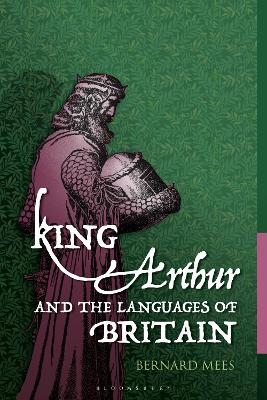
King Arthur and the Languages of Britain
Examining the Linguistic Evidence
Seiten
2025
Bloomsbury Academic (Verlag)
978-1-350-44310-5 (ISBN)
Bloomsbury Academic (Verlag)
978-1-350-44310-5 (ISBN)
- Noch nicht erschienen (ca. Februar 2025)
- Versandkostenfrei innerhalb Deutschlands
- Auch auf Rechnung
- Verfügbarkeit in der Filiale vor Ort prüfen
- Artikel merken
Medievalists have denied the historical existence of King Arthur for over 50 years. Arthur and the Languages of Britain demonstrates how linguistic evidence can be employed to see if the earliest historical records that mention Arthur are reliable.
The book begins with an analysis of the evidence for the Anglo-Saxon invasions and the response of the Britons, and introduces the main methodological approaches employed in the linguistic analysis of historical records. It then provides evidence for Arthur as a Cumbric-speaker active in the region about Hadrian’s Wall, before assessing the linguistic evidence which supports the validity of the references to Arthur in the Welsh Annals and the Historia Brittonum.
Bernard Mees reflects on how Arthur is recorded as having taken part in the Battle of Mount Badon, a site that has never been located, and dying at Camlann, now Castlesteads on Hadrian’s Wall. He uses linguistic analysis of the evidence recorded for the existence of Arthur to support the historical reliability of these records. Mees concludes with a summary of how Geoffrey of Monmouth created pseudo-historical stories from the references to Arthur in these early sources, turning Ambrosius Aurelianus into Merlin and Mordred into King Arthur’s nephew and the lover of his queen Guinevere.
The book begins with an analysis of the evidence for the Anglo-Saxon invasions and the response of the Britons, and introduces the main methodological approaches employed in the linguistic analysis of historical records. It then provides evidence for Arthur as a Cumbric-speaker active in the region about Hadrian’s Wall, before assessing the linguistic evidence which supports the validity of the references to Arthur in the Welsh Annals and the Historia Brittonum.
Bernard Mees reflects on how Arthur is recorded as having taken part in the Battle of Mount Badon, a site that has never been located, and dying at Camlann, now Castlesteads on Hadrian’s Wall. He uses linguistic analysis of the evidence recorded for the existence of Arthur to support the historical reliability of these records. Mees concludes with a summary of how Geoffrey of Monmouth created pseudo-historical stories from the references to Arthur in these early sources, turning Ambrosius Aurelianus into Merlin and Mordred into King Arthur’s nephew and the lover of his queen Guinevere.
Bernard Mees has taught history, linguistics and business at the University of Melbourne, Australia, RMIT University, Australia and the University of Tasmania, Australia, and is currently an academic visitor at Uppsala University, Sweden. His most recent book is The English Language Before England (2023) and he is a member of the editorial board of NOWELE.
1. Arthur and the historians
2. Picts and Scots, Romans and Britons
3. Roman Britain and the Germanic invasions
4. Gildas and Vortigern
5. The Northern Arthur
6. The Welsh Annals and the Northern Chronicle
7. Arthur’s Twelve Battles
8. Geoffrey of Monmouth
9. Conclusion
Appendices
Index
| Erscheint lt. Verlag | 20.2.2025 |
|---|---|
| Zusatzinfo | 10 bw illus |
| Verlagsort | London |
| Sprache | englisch |
| Maße | 156 x 234 mm |
| Themenwelt | Geschichte ► Allgemeine Geschichte ► Mittelalter |
| Geisteswissenschaften ► Geschichte ► Regional- / Ländergeschichte | |
| ISBN-10 | 1-350-44310-7 / 1350443107 |
| ISBN-13 | 978-1-350-44310-5 / 9781350443105 |
| Zustand | Neuware |
| Haben Sie eine Frage zum Produkt? |
Mehr entdecken
aus dem Bereich
aus dem Bereich
eine neue Geschichte des Mittelalters
Buch | Hardcover (2023)
C.H.Beck (Verlag)
38,00 €


